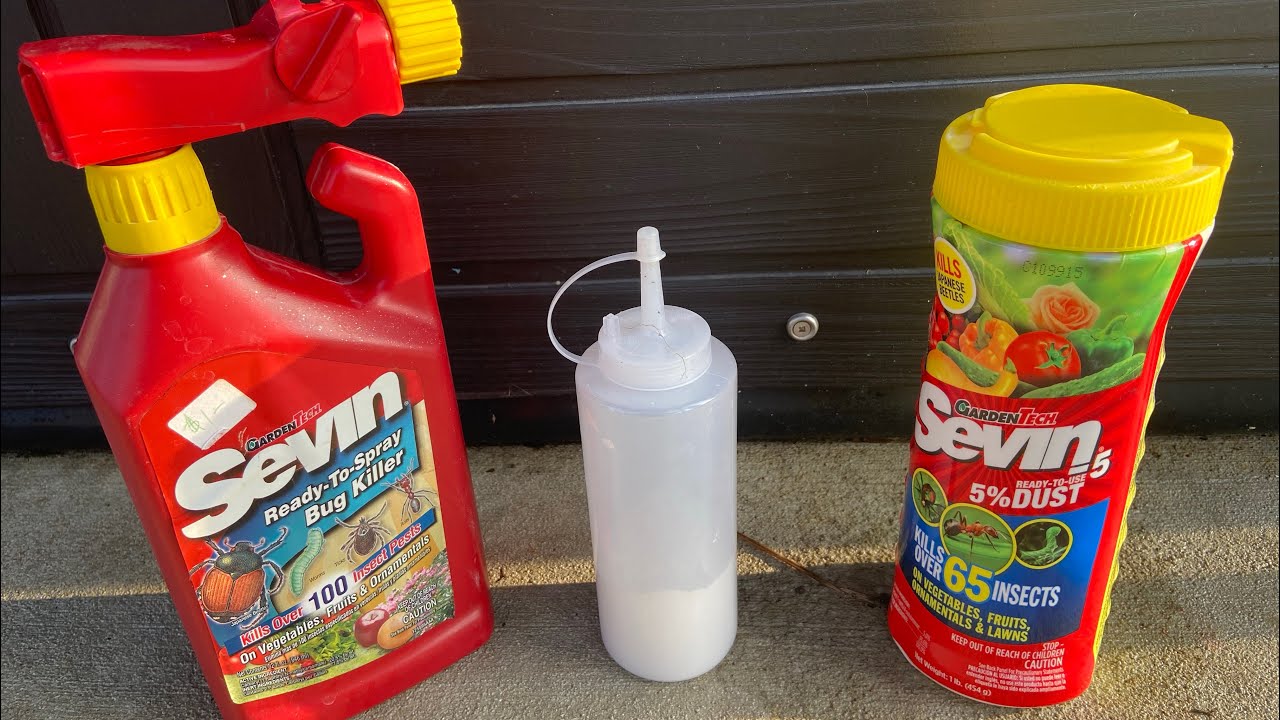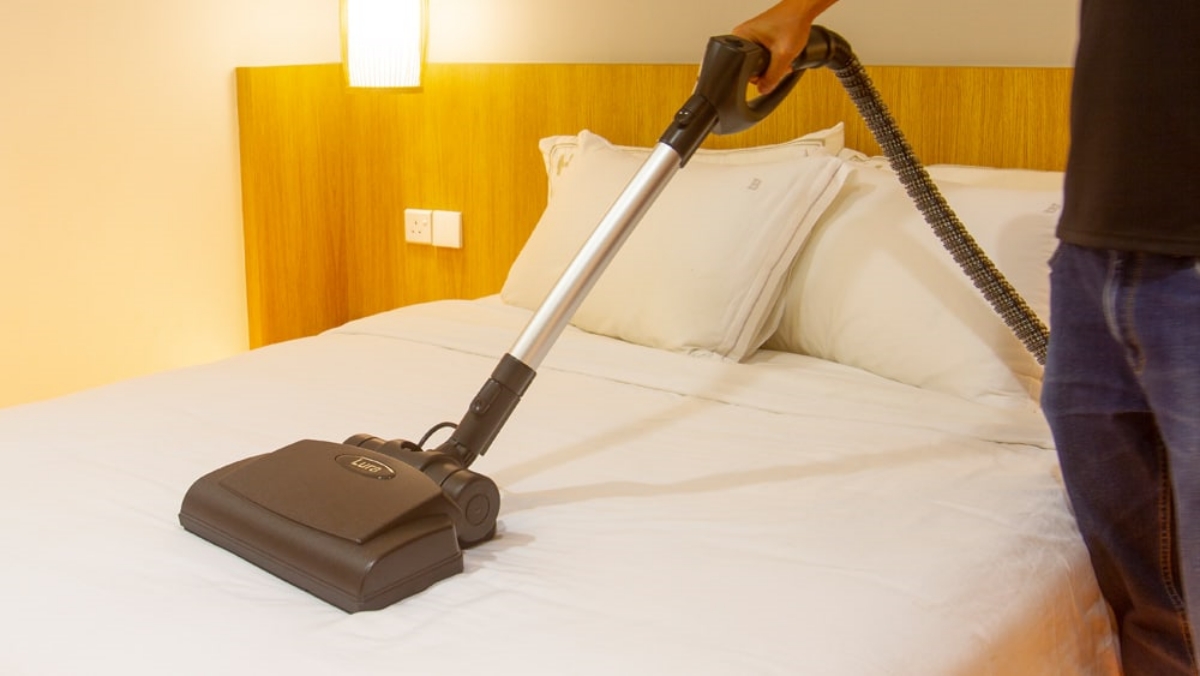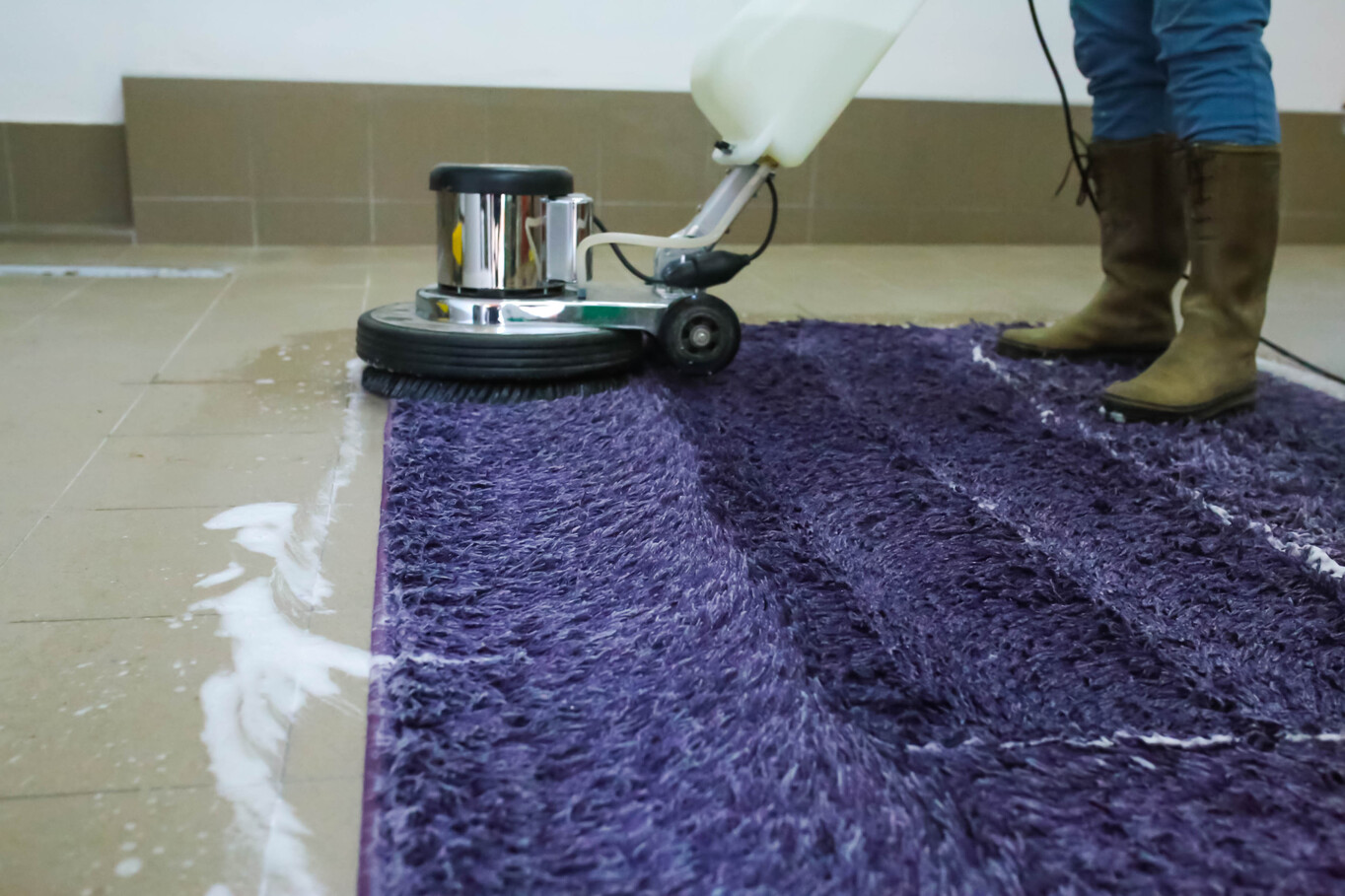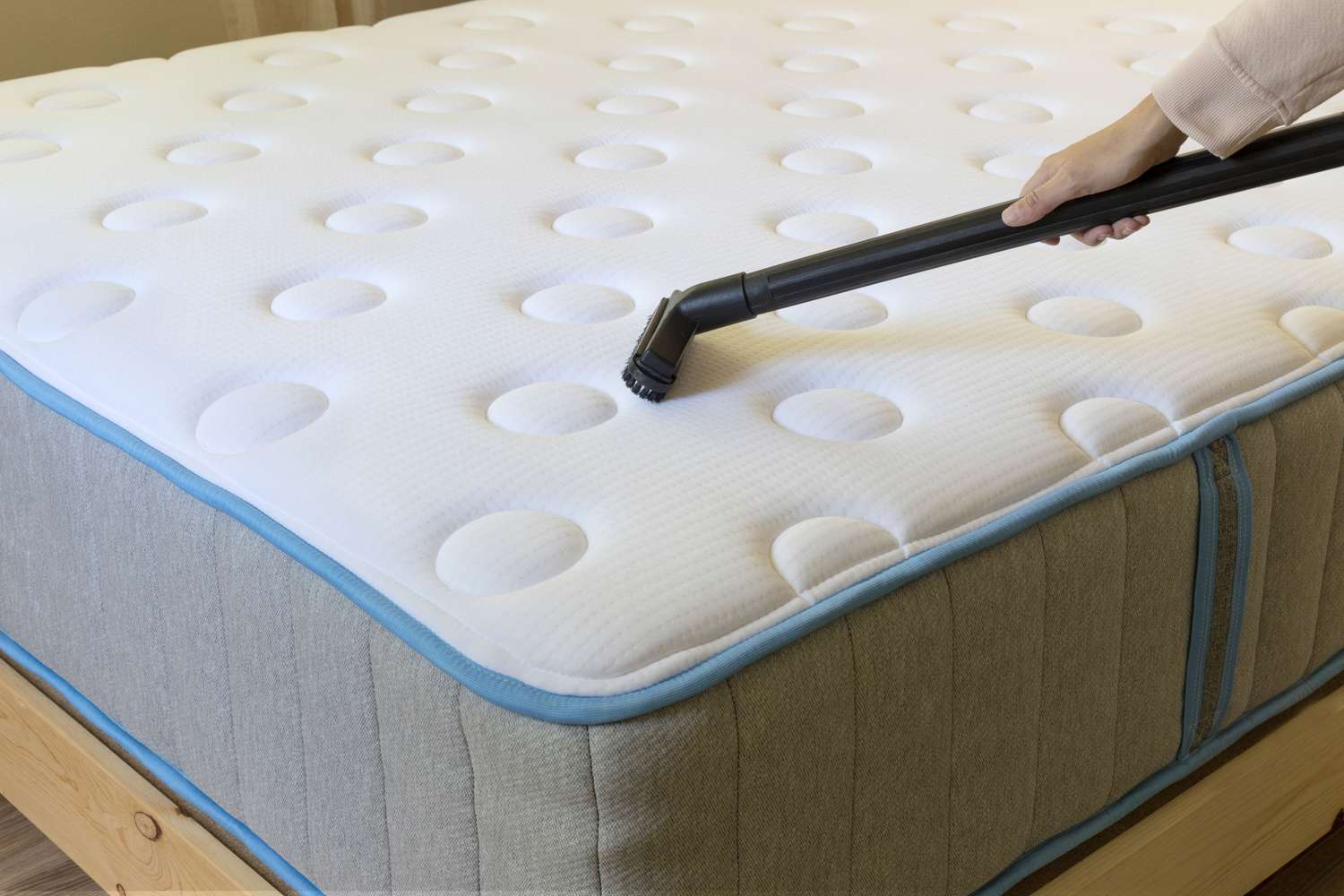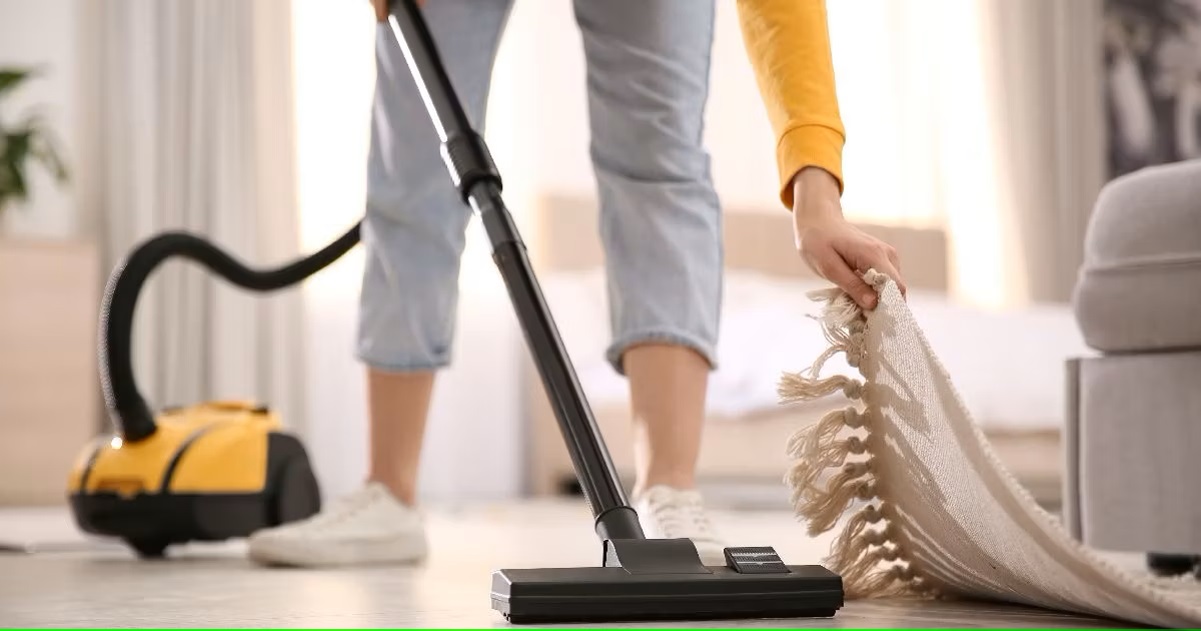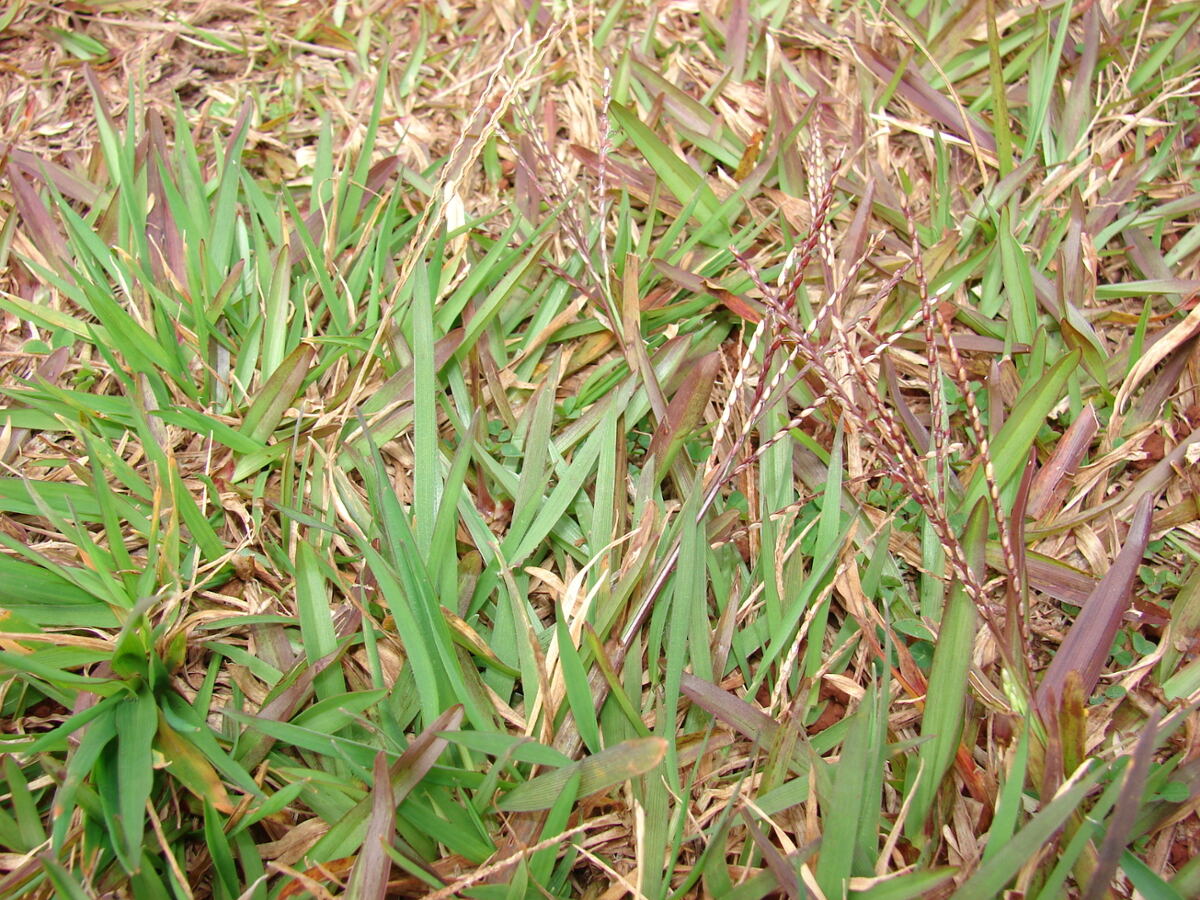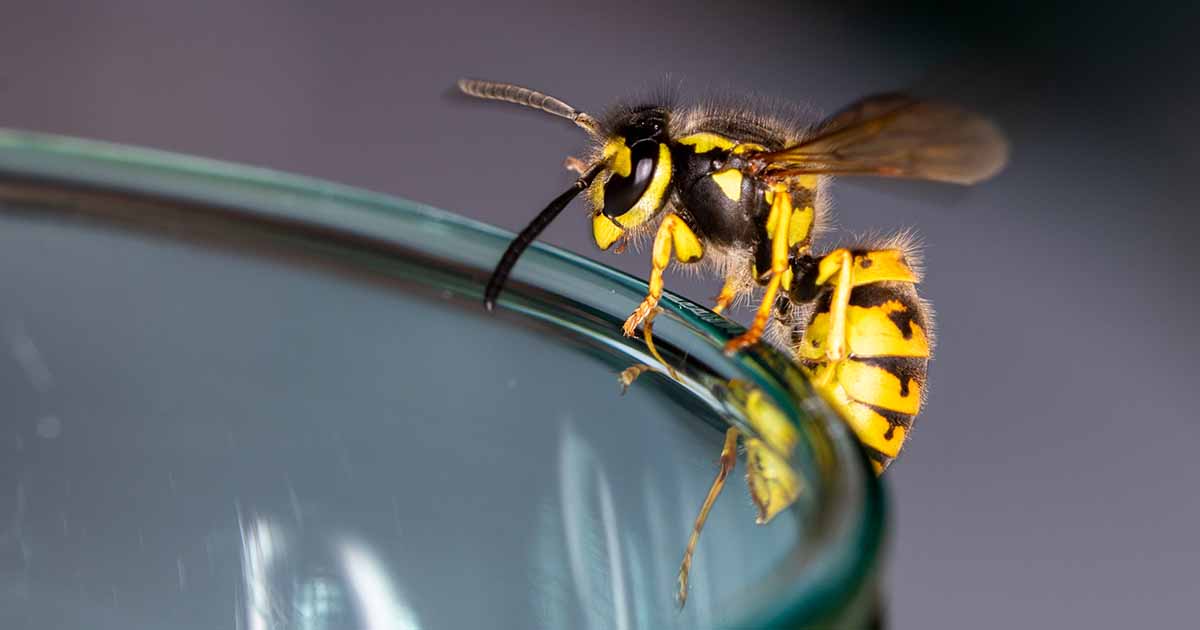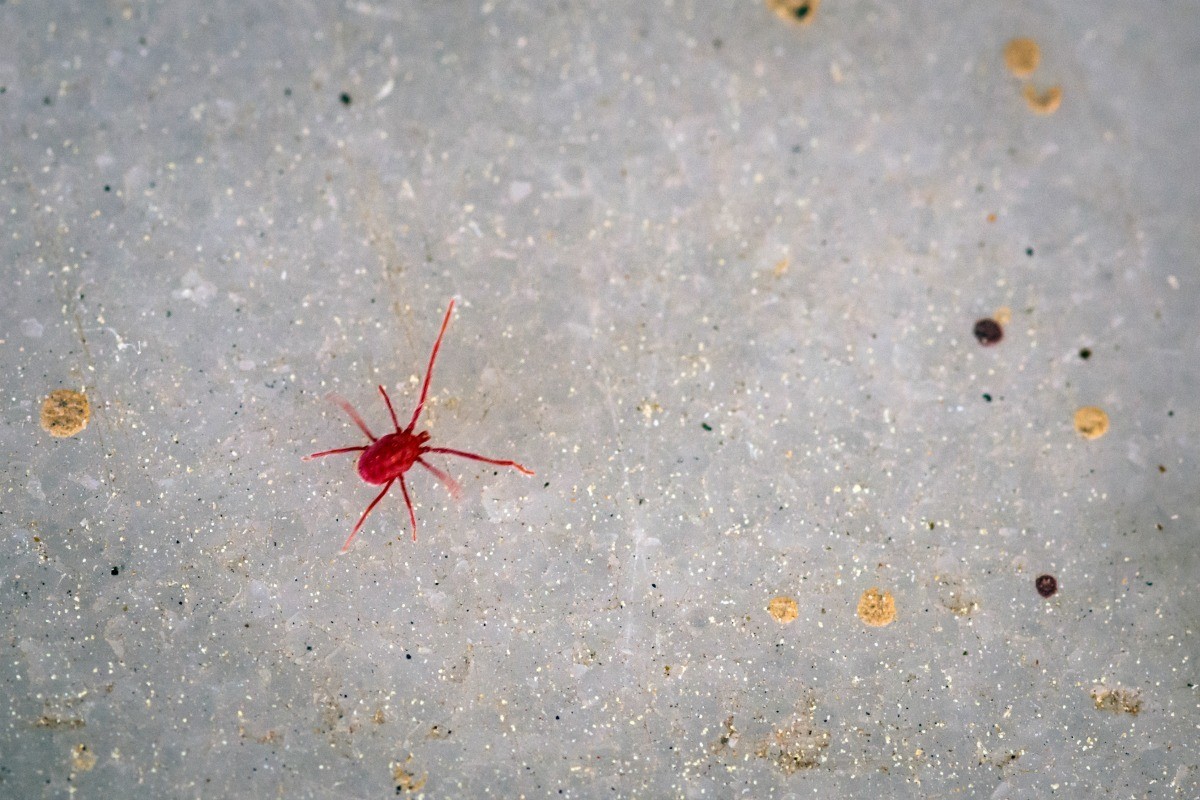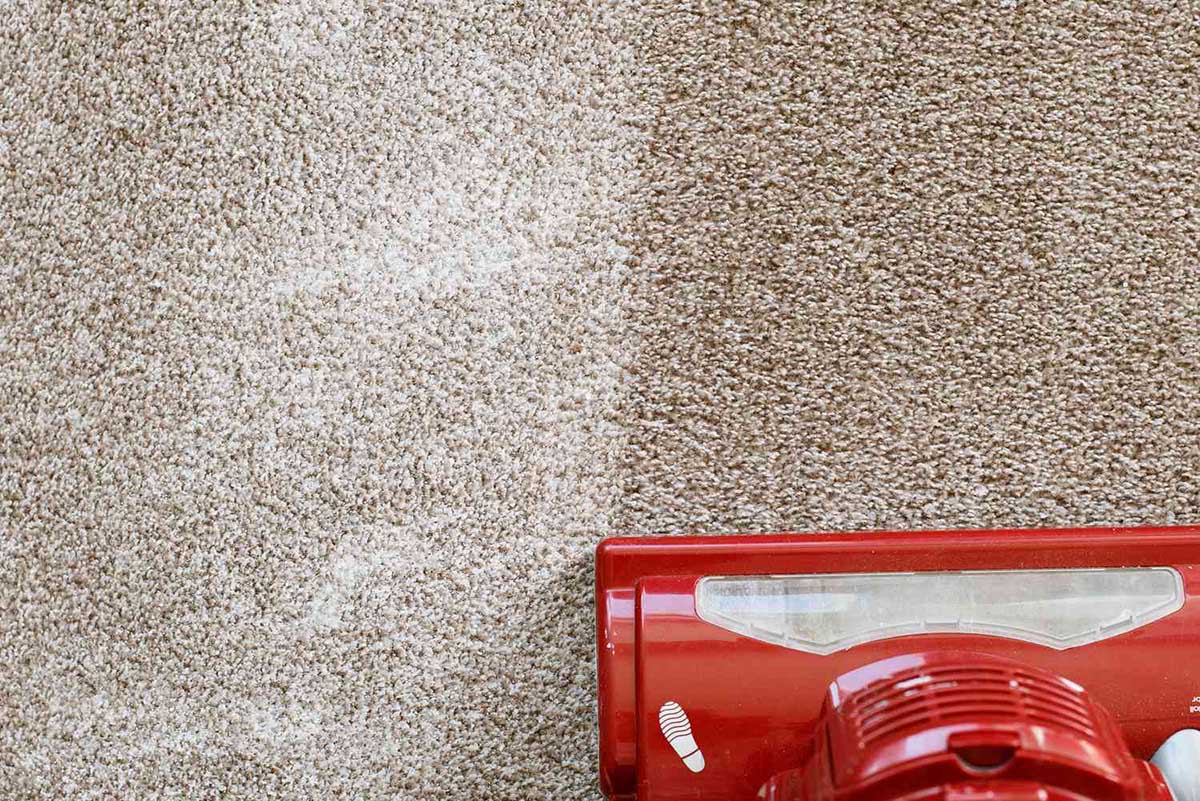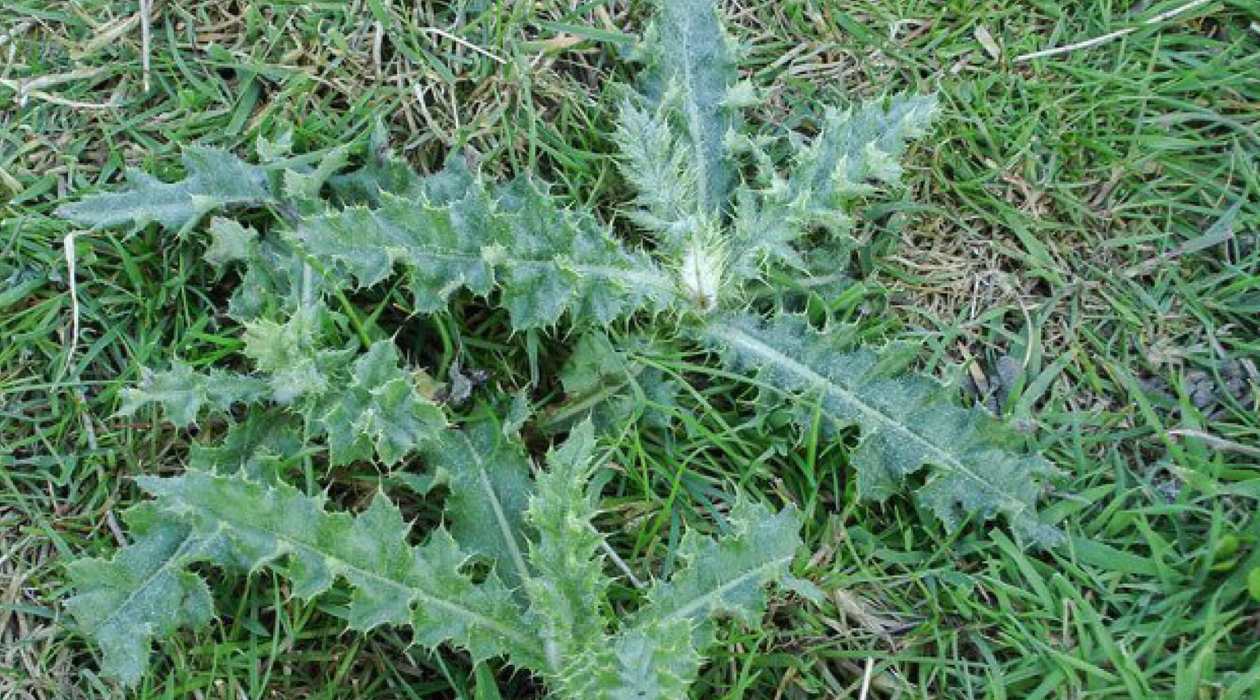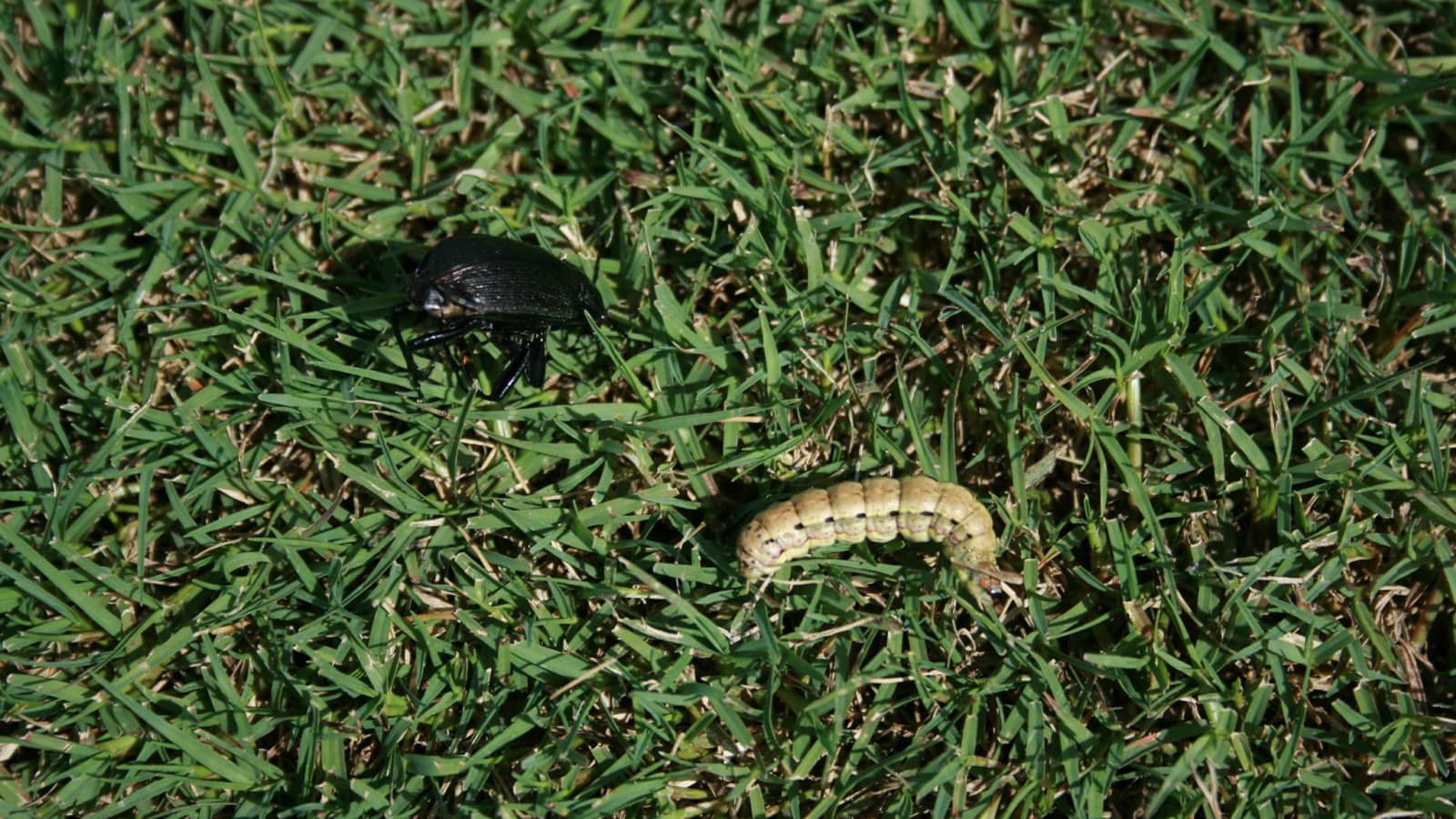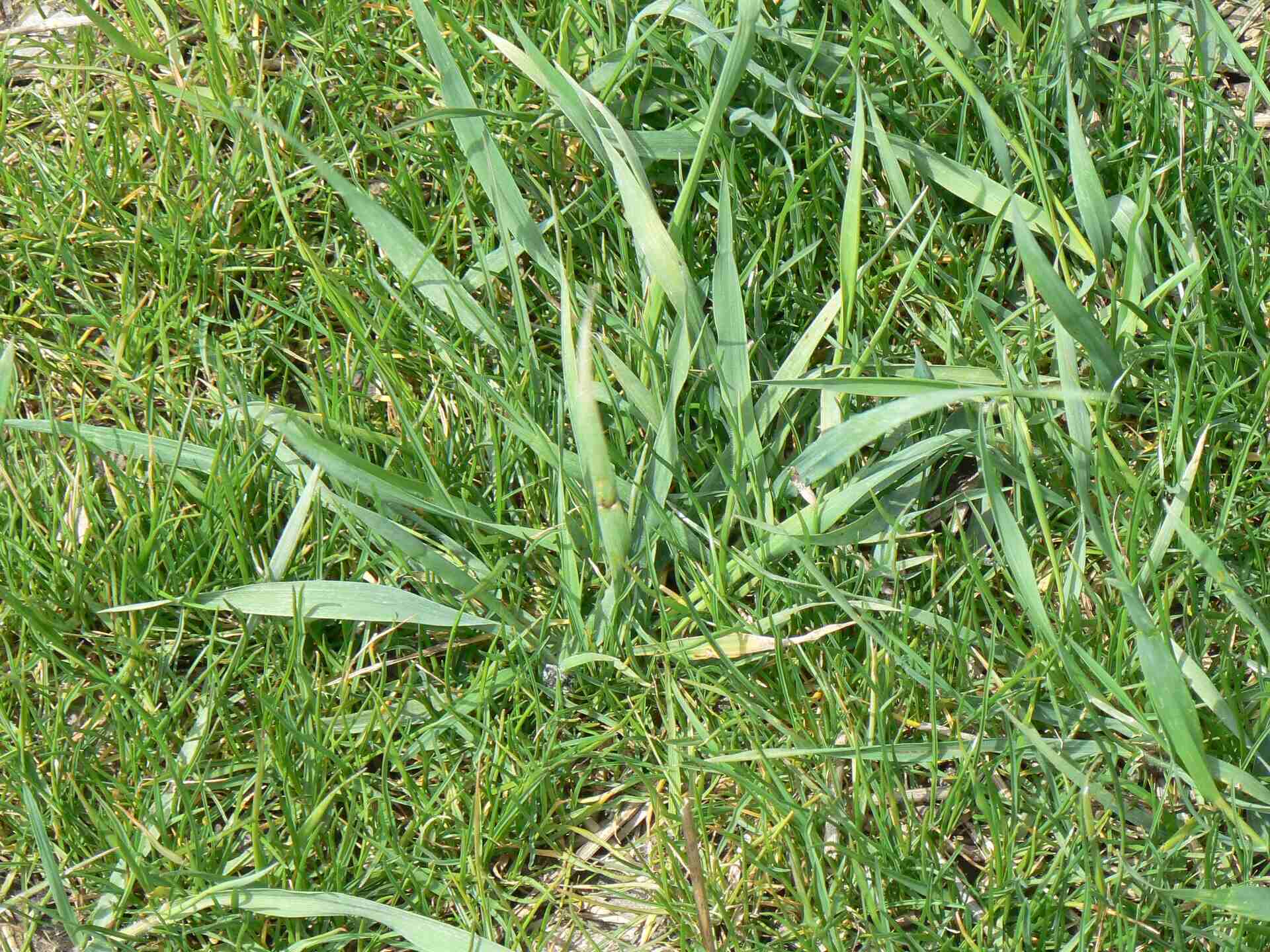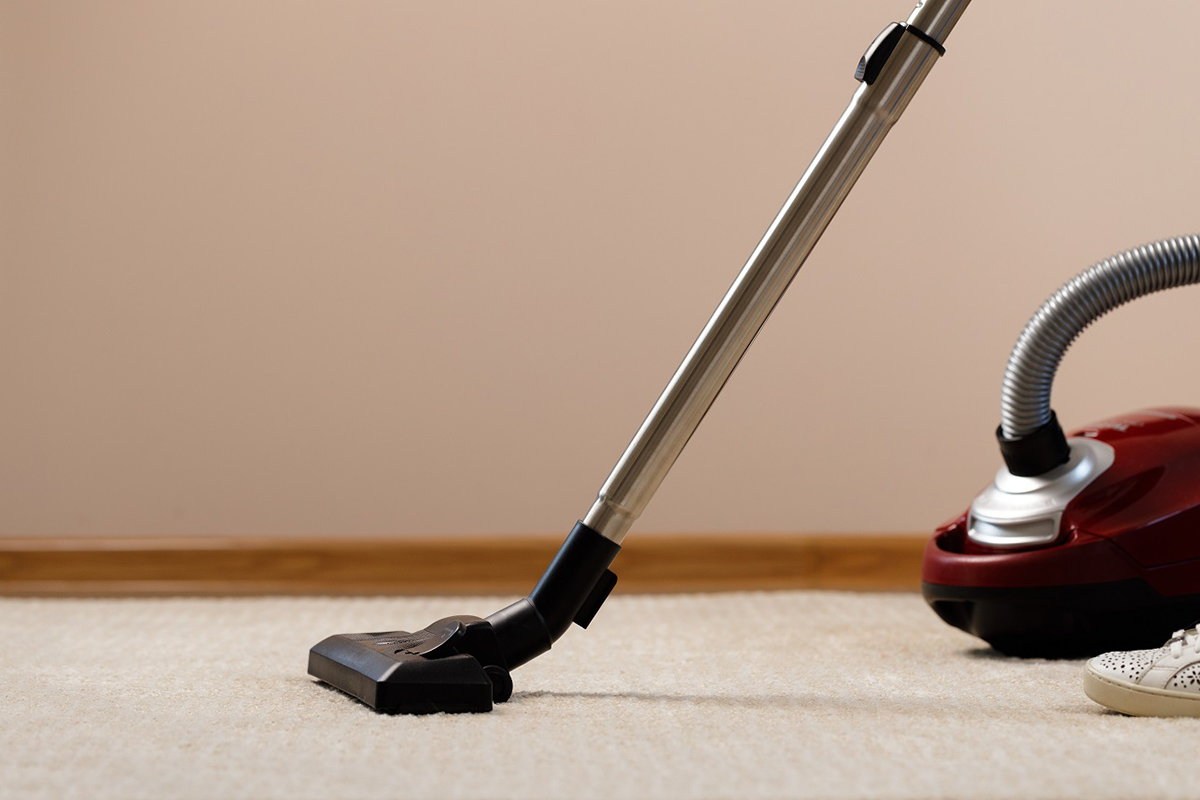

Articles
What Kills Dust Mites In A Carpet
Modified: November 1, 2024
Looking for effective ways to eliminate dust mites in your carpet? Check out our informative articles for tips and advice on killing dust mites and improving indoor air quality.
(Many of the links in this article redirect to a specific reviewed product. Your purchase of these products through affiliate links helps to generate commission for Storables.com, at no extra cost. Learn more)
Introduction
Dust mites are microscopic organisms that are commonly found in households, especially in carpets. These tiny creatures thrive in warm, humid environments and feed on dead skin cells shed by humans and pets. While dust mites themselves are harmless, their droppings and body fragments can trigger allergic reactions and asthma symptoms in sensitive individuals. Therefore, it is crucial to eliminate or reduce dust mites in carpets to improve indoor air quality and create a healthier living environment.
In this article, we will explore various methods to kill dust mites in carpets, ranging from natural remedies to chemical-based solutions. We will also discuss vacuuming techniques and the use of steam cleaning as effective strategies to combat these pesky allergens. Furthermore, we will provide prevention and maintenance tips to help you keep dust mites at bay and maintain a clean and allergen-free carpet.
Before diving into the specific methods for dust mite removal, it is important to understand the impact that these tiny creatures can have on our health. Dust mites produce allergens that can cause allergic reactions, such as sneezing, runny nose, itchy eyes, and skin rashes. They can also trigger asthma symptoms, including coughing, wheezing, shortness of breath, and chest tightness. For individuals who are already suffering from allergies or asthma, the presence of dust mites in carpets can exacerbate their symptoms and reduce their overall quality of life.
Now that we have a better understanding of the problem at hand, let’s explore the different methods for killing dust mites in carpets. Whether you prefer natural remedies or chemical-based solutions, there are options available to suit your preferences and needs. By taking proactive measures and following regular maintenance routines, you can effectively control dust mites and maintain a clean and healthy carpeted environment.
Key Takeaways:
- Regular vacuuming with a HEPA filter and steam cleaning are effective methods to kill dust mites in carpets, improving indoor air quality and reducing allergic reactions.
- Natural remedies like baking soda and essential oils, along with chemical-based solutions, offer diverse options to combat dust mites and create a healthier living environment.
Read more: How To Kill Dust Mites In Carpet
Understanding Dust Mites and Their Impact
Dust mites are microscopic arthropods that belong to the spider family. They measure about 0.2-0.3 millimeters in size, making them invisible to the naked eye. These tiny creatures are found in abundance in humid environments, such as bedding, upholstery, and, of course, carpets.
One of the primary reasons why dust mites thrive in carpets is because they serve as a source of food. Dust mites feed on dead skin cells that are shed by people and pets on a daily basis. The carpet, being a plush and comfortable surface, provides an ideal environment for dust mites to thrive and multiply.
Their presence in carpets can lead to various health issues, particularly for individuals who are sensitive or allergic to dust mite allergens. These allergens are found in the fecal matter, body parts, and saliva of dust mites. When disturbed, these microscopic particles become airborne and can be easily inhaled, triggering allergic reactions and respiratory problems.
For individuals with dust mite allergies, exposure to these allergens can cause symptoms like sneezing, coughing, runny nose, itchy eyes, and congestion. In more severe cases, it can even lead to asthma attacks. It is estimated that approximately 20 million Americans suffer from allergies caused by dust mites. Therefore, it is crucial to understand the impact of dust mites and take necessary measures to minimize their presence in carpets.
In addition to allergic reactions, dust mites can also exacerbate existing respiratory conditions such as asthma. The allergens released by dust mites can trigger asthma symptoms, such as wheezing, coughing, shortness of breath, and chest tightness. For individuals with asthma, it is especially important to control and minimize dust mites in order to maintain good respiratory health.
It is worth noting that dust mites are not harmful in themselves, as they do not bite or transmit diseases to humans. However, their allergenic properties can cause discomfort and health issues in sensitive individuals. Therefore, it is essential to implement effective methods to kill and control dust mites in carpets to create a healthier living environment for everyone in your household.
Common Methods for Killing Dust Mites in Carpets
There are several methods you can employ to effectively kill dust mites in carpets. These methods range from natural remedies to chemical-based solutions, offering options to suit different preferences and needs. Let’s explore some of the common methods:
- Hot Water Washing: Dust mites cannot survive high temperatures. One effective way to kill them is by washing your carpets in hot water. This method involves removing the carpet and machine-washing it at a high temperature, preferably above 130°F (54°C). Hot water effectively kills dust mites and removes their allergens from the carpet fibers. However, it’s important to check the care instructions for your carpet to ensure it can withstand hot water washing.
- Freezing: Dust mites are also susceptible to extreme cold temperatures. If hot water washing is not an option, you can try freezing your carpet to kill the dust mites. To do this, remove the carpet from the room and place it in a sealed plastic bag. Leave it in the freezer for at least 24 hours to ensure all the dust mites are eliminated. After freezing, vacuum the carpet thoroughly to remove the dead mites and their debris.
- Steam Cleaning: Steam cleaning is a highly effective method for killing dust mites in carpets. The high heat generated by the steam kills mites and their allergens, and the moisture helps to flush them out of the carpet fibers. It is important to use a steam cleaner specifically designed for carpets and follow the manufacturer’s instructions for optimal results. Steam cleaning not only kills dust mites but also removes dirt, debris, and stains, leaving your carpet fresh and clean.
- Diatomaceous Earth: Diatomaceous earth is a natural powder made from the fossilized remains of diatoms. It is safe for humans and pets but deadly for dust mites. Sprinkle diatomaceous earth liberally on your carpet and leave it for a few hours or overnight. The microscopic sharp edges of the diatoms cut into the exoskeleton of the dust mites, dehydrating and killing them. Vacuum the carpet thoroughly after the treatment to remove the dead mites and the powder.
- UV-C Light: UV-C light is a powerful tool for killing dust mites and other microorganisms. UV-C light damages the DNA of dust mites, rendering them unable to reproduce and effectively killing them. Specialized UV-C light devices are available for use on carpets and upholstery. Follow the manufacturer’s instructions carefully when using UV-C light devices and ensure proper safety precautions are taken, such as wearing protective eyewear.
Remember, it’s essential to maintain regular cleaning routines and implement preventive measures to keep dust mites at bay. While these methods can help reduce dust mite populations, it is impossible to completely eliminate them. By incorporating a combination of these methods and maintaining a clean and healthy living environment, you can minimize the impact of dust mites and create a more comfortable space for you and your family.
Natural Remedies for Eliminating Dust Mites in Carpets
If you prefer natural solutions to chemical-based products, there are several effective remedies you can try to eliminate dust mites in your carpets. These natural methods provide a safe and eco-friendly way to combat dust mite infestations. Let’s explore some of the popular natural remedies:
- Baking Soda: Baking soda is a versatile and readily available household ingredient that can help eliminate dust mites. Sprinkle a generous amount of baking soda onto your carpet and let it sit for a few hours or overnight. Baking soda works by absorbing moisture and odor, making the environment unfavorable for dust mites. After the desired time, thoroughly vacuum the carpet to remove the baking soda along with the dead dust mites.
- Essential Oils: Certain essential oils have antimicrobial and insecticidal properties that can help kill dust mites. Tea tree oil, eucalyptus oil, and lavender oil are known for their potential to eliminate dust mites and their allergens. Mix a few drops of your preferred essential oil with water in a spray bottle and lightly mist your carpet. Let it dry completely before vacuuming. Remember to patch test a small, inconspicuous area of the carpet first to ensure that the oil does not cause any discoloration.
- Washing with Vinegar: White vinegar is a natural disinfectant that can help kill dust mites and remove allergens from carpets. Mix equal parts of white vinegar and water in a large bucket. Remove the carpet and use a clean cloth or sponge soaked in the vinegar solution to thoroughly clean the carpet. Avoid soaking the carpet or using excessive amounts of liquid, as it can damage the carpet fibers. After cleaning, allow the carpet to air dry completely before placing it back in the room.
- Sunlight: Sunlight is a natural enemy of dust mites. Sun exposure can help sterilize and kill dust mites in carpets. Take advantage of sunny days by removing your carpet from the room and placing it outdoors in direct sunlight. Leave it there for a few hours, flipping it over halfway through for even exposure. The heat and UV rays from the sun will help eliminate dust mites and their allergens. Remember to check the care instructions for your carpet to ensure that sun exposure does not cause any fading or damage.
- Freezing: As mentioned earlier, extreme cold temperatures can be effective in killing dust mites. If freezing the entire carpet is not feasible, you can spot treat areas by placing them in a sealed plastic bag and putting them in the freezer for at least 24 hours. This method is particularly useful for smaller items such as rugs or small carpeted sections. After freezing, remove the item from the bag and thoroughly vacuum the area to remove dead dust mites and their debris.
While natural remedies can help eliminate dust mites, it’s important to note that they may not be as potent as chemical-based products. Additionally, these remedies may require repeated application and regular maintenance to achieve desired results. If you have severe dust mite allergies or a persistent infestation, it may be necessary to combine these natural remedies with other cleaning methods or consult a professional cleaning service for more extensive treatment.
By using these natural remedies and adopting a proactive approach to cleanliness, you can effectively control dust mites in your carpets and create a healthier living environment for you and your family.
Chemical-Based Solutions for Dust Mite Removal
In addition to natural remedies, there are several chemical-based solutions available that can effectively eliminate dust mites in carpets. These products are specifically formulated to target dust mites and their allergens, providing a powerful solution to combat infestations. Let’s explore some of the common chemical-based solutions for dust mite removal:
- Allergen Control Sprays: Allergen control sprays are specifically designed to neutralize dust mite allergens and other indoor allergens. These sprays contain ingredients that denature the allergenic proteins present in dust mite droppings and body fragments, rendering them harmless. Simply spray the allergen control product onto your carpet as directed, allowing it to dry completely. This effectively reduces the levels of allergens in your carpet, providing relief for allergy sufferers.
- Pesticide Sprays: Pesticide sprays are chemical-based formulations that are designed to kill dust mites and other pests. These sprays often contain acaricides, which are insecticides that specifically target and eliminate mites. When using pesticide sprays, it is important to follow the instructions carefully and take necessary precautions, such as ventilating the area and keeping pets and children away from treated surfaces. It is recommended to consult a professional pest control service to ensure safe and effective use of pesticide sprays.
- Acaricidal Dusts: Acaricidal dusts are powdered formulations that can be applied to carpets to kill dust mites. These dusts typically contain ingredients such as benzyl benzoate or diatomaceous earth, which are known for their insecticidal properties. Sprinkle the acaricidal dust evenly onto your carpet, focusing on areas with high dust mite activity. Allow the dust to sit for a few hours or overnight, and then thoroughly vacuum the carpet to remove the dead mites and dust debris. It is important to wear a mask and gloves during the application and to keep pets and children away from the treated area.
- Carpet Shampoos: Carpet shampoos formulated for dust mite removal can effectively cleanse and sanitize your carpet. These shampoos contain ingredients that not only remove dirt and stains but also kill dust mites and their allergens. Follow the instructions provided by the manufacturer to properly dilute and apply the shampoo onto your carpet. Use a carpet cleaning machine or a brush to thoroughly clean the carpet and remove any residue. Regular use of carpet shampoos can help maintain a clean and allergen-free carpet.
- Anti-Allergen Laundry Additives: Dust mites can also thrive in bedding, pillows, and other fabric surfaces. Using anti-allergen laundry additives can effectively reduce dust mite allergens in your washable items, including carpets (if they are machine-washable). These additives are designed to denature and neutralize allergenic proteins, making them less likely to trigger allergic reactions. Simply add the recommended amount of anti-allergen additive to your laundry detergent when washing your carpets or other washable items to eliminate dust mite allergens.
When using chemical-based products for dust mite removal, it is crucial to read and follow the instructions provided by the manufacturer. Exercise caution and adhere to the safety precautions to ensure that you use these products safely and effectively. If you have concerns about using chemical-based solutions or have severe allergies, it may be best to consult with a professional cleaning service that specializes in allergen removal to ensure the proper treatment and maintenance of your carpets.
By utilizing these chemical-based solutions and taking necessary precautions, you can effectively eliminate dust mites in your carpets and create a healthier environment for you and your family.
Vacuuming regularly with a high-efficiency particulate air (HEPA) filter can help to remove and kill dust mites in a carpet. Additionally, steam cleaning the carpet can also help to eliminate dust mites and their allergens.
Read more: How To Kill Dust Mites In Pillows
Vacuuming Techniques for Effective Dust Mite Control
Vacuuming is one of the most essential and effective methods for controlling dust mites in carpets. Regular vacuuming helps to remove dust, debris, and dust mite allergens from the carpet fibers, reducing their population and minimizing allergic reactions. However, it is important to employ proper vacuuming techniques to ensure optimal dust mite control. Here are some techniques to consider:
- Use a High-Efficiency Particulate Air (HEPA) Filter: HEPA filters are designed to trap small particles, such as dust mite allergens, effectively. When vacuuming carpets, make sure your vacuum cleaner is equipped with a HEPA filter to prevent allergens from being released back into the air. This helps to maintain better indoor air quality and reduce the risk of allergic reactions.
- Vacuum Thoroughly and Regularly: Make it a habit to vacuum your carpets thoroughly and on a regular basis. Aim to vacuum at least once or twice a week, or more frequently in high-traffic areas or if you have pets. Be thorough in your vacuuming by going over each section of the carpet multiple times, using slow and overlapping strokes. This helps to ensure that you capture as many dust mites and allergens as possible.
- Pay Attention to Hard-to-Reach Areas: Dust mites can accumulate in hard-to-reach areas, such as corners, edges, and under furniture. Use vacuum attachments, such as crevice tools and upholstery brushes, to access these areas and remove dust mites and allergens. Move furniture if possible to vacuum underneath and behind it. Dust mites thrive in warm and humid environments, so paying attention to these hidden areas is crucial for effective dust mite control.
- Slow and Steady Movement: When vacuuming carpets, use slow and steady movements to allow the vacuum cleaner to effectively suction up dust mites and allergens. Quick and hasty movements may not give the vacuum enough time to capture all the particles, reducing the effectiveness of the cleaning process. Take your time and ensure thorough coverage of the carpeted surfaces.
- Empty and Clean the Vacuum Regularly: A full or dirty vacuum bag or canister can hinder the performance of the vacuum cleaner, reducing its ability to capture dust mites and allergens effectively. Empty and clean the vacuum bag or canister regularly to maintain optimum suction power. Additionally, clean or replace the vacuum filters as recommended by the manufacturer to maintain efficient filtration.
- Consider Using a Carpet Rake: A carpet rake is a useful tool that can help agitate the carpet fibers and dislodge dust mites and allergens for easier removal during vacuuming. Use a carpet rake to gently brush the carpet in a back-and-forth motion before vacuuming. This action can loosen dust mites and allergens from the fibers, making them more accessible to the vacuum cleaner.
Remember, vacuuming alone may not completely eliminate dust mites, but it is an essential step in controlling their population and reducing the allergen load in your carpet. By adopting proper vacuuming techniques and incorporating it into your regular cleaning routine, you can significantly improve indoor air quality and create a healthier living environment for you and your family.
Steam Cleaning as an Effective Method for Killing Dust Mites in Carpets
Steam cleaning is a highly effective method for killing dust mites in carpets. It utilizes high temperatures and moisture to eliminate dust mites and their allergens, providing a deep and thorough clean. Steam cleaning not only removes visible dirt and stains but also effectively sanitizes the carpet, making it an excellent choice for those seeking an efficient and chemical-free solution. Here are the key benefits and steps involved in steam cleaning carpets:
Benefits of Steam Cleaning:
- Kills Dust Mites: The high temperatures produced by steam cleaning, typically between 212°F (100°C) and 250°F (121°C), effectively kill dust mites and their eggs. Steam penetrates deep into the carpet fibers, reaching areas where dust mites reside, and eliminates them, providing a thorough cleaning.
- Removes Allergens: In addition to killing dust mites, steam cleaning also helps to remove allergens from the carpet. The heat and moisture break down and dissolve dust mite droppings, body fragments, and other allergenic substances, making them easier to extract during the cleaning process.
- Chemical-Free Cleaning: Steam cleaning relies on the power of heat and water vapor, eliminating the need for harsh chemicals. This makes it a safe and eco-friendly cleaning method, especially for households with children, pets, or individuals sensitive to chemical-based products.
- Sanitizes and Refreshes the Carpet: Steam cleaning not only kills dust mites but also sanitizes the carpet by killing bacteria, mold, and other microorganisms. It effectively removes odors and leaves the carpet looking and smelling fresh and clean.
Steps for Steam Cleaning:
- Prepare the Area: Start by removing any furniture or obstacles from the area that will be steam cleaned. This allows for easy and thorough cleaning of the entire carpeted surface.
- Vacuum the Carpet: Before steam cleaning, it is crucial to vacuum the carpet thoroughly to remove loose dirt, debris, and surface-level dust mites. This helps prevent clogging and ensures the steam cleaner can reach deep into the carpet fibers.
- Prepare the Steam Cleaner: Fill the steam cleaner’s reservoir with clean water according to the manufacturer’s instructions. Some models may require the addition of a cleaning solution, so be sure to follow the recommended guidelines. Allow the steam cleaner to heat up until it reaches the appropriate temperature for effective dust mite elimination.
- Steam Clean the Carpet: Fit the appropriate attachment or nozzle to the steam cleaner and begin steam cleaning the carpet. Slowly glide the steam cleaner over the carpet, using overlapping strokes to ensure complete coverage. Pay extra attention to high-traffic areas and any spots or stains. Allow the steam to penetrate the carpet fibers for a few seconds before moving on to the next section.
- Extraction and Drying: As you steam clean, the steam cleaner will simultaneously extract the moisture, dirt, and dust mite allergens from the carpet. Ensure proper extraction by following the manufacturer’s instructions. After steam cleaning, allow the carpet to dry completely before walking or placing furniture back on it. Proper ventilation can expedite the drying process.
Steam cleaning is an effective method for killing dust mites in carpets, providing a deep and thorough clean. However, it is important to note that some carpets may not be suitable for steam cleaning. Check the care instructions for your carpet and consult with professionals if you are unsure about its suitability for steam cleaning.
By incorporating steam cleaning into your regular carpet maintenance routine, you can significantly reduce dust mites and allergens, improving indoor air quality and creating a healthier living environment for you and your family.
Prevention and Maintenance Tips to Keep Dust Mites at Bay
Preventing and controlling dust mites requires consistent efforts and maintenance. By following these prevention and maintenance tips, you can effectively keep dust mites at bay and create a healthier environment for you and your family:
- Maintain Optimal Humidity Levels: Dust mites thrive in humid environments. Aim to keep the humidity level in your home below 50%. Use dehumidifiers in damp areas, such as basements, bathrooms, and laundry rooms, to control moisture levels. Proper ventilation and air circulation can also help reduce humidity.
- Wash Bedding and Linens Regularly: Dust mites often accumulate in bedding, pillows, and other fabric surfaces. Wash your bedding and linens in hot water (above 130°F or 54°C) at least once a week to kill dust mites and remove their allergens. Use hypoallergenic covers for mattresses, pillows, and duvets to create a barrier against dust mites and their allergens.
- Regularly Vacuum Carpets and Upholstery: Vacuum your carpets, area rugs, and upholstery on a regular basis to remove dust, debris, and dust mite allergens. Use a vacuum cleaner with a HEPA filter for better filtration. Pay attention to high-traffic areas and hard-to-reach spots, as they tend to harbor more dust mites. Vacuuming should be done at least once or twice a week, or more frequently if necessary.
- Minimize Carpeted Areas: Consider reducing the number of carpeted areas in your home, especially in bedrooms and other areas where people spend a significant amount of time. Choose hard flooring options such as hardwood, tile, or laminate, as they are easier to clean and less hospitable to dust mites.
- Regularly Dust and Clean: Dust surfaces in your home with a damp cloth or microfiber cloth to trap dust particles instead of spreading them into the air. Avoid using dry dusters or feather dusters, as they can disperse the dust. Additionally, clean surfaces with non-toxic cleaning products to reduce the buildup of dust mites and allergens.
- Avoid Carpet Shaking: Shaking or beating carpets outdoors can release dust mites and their allergens into the air, exacerbating allergies and respiratory issues. Instead, vacuum and steam clean carpets regularly as part of your cleaning routine to effectively remove dust mites and their debris.
- Control Pet Dander and Indoor Pets: If you have pets, keep them out of bedrooms and off upholstered furniture, as pet dander is a common allergen and can attract dust mites. Regularly groom and bathe your pets to reduce the shedding of allergens. Consider using hypoallergenic bedding for pets as well.
- Reduce Clutter: Clutter serves as a breeding ground for dust mites, making it harder to effectively clean the area. Minimize clutter and keep surfaces clear to facilitate regular cleaning and maintenance.
Remember, while these prevention and maintenance tips can help minimize dust mites and their allergens, it may not be possible to completely eliminate them. However, by adopting these practices and maintaining good hygiene habits, you can significantly reduce their population and create a healthier living environment for you and your family.
Conclusion
Dust mites, though tiny, can have a big impact on our health, especially for those who suffer from allergies or asthma. As we have explored in this article, there are various methods available to effectively kill dust mites in carpets and minimize their presence. From natural remedies to chemical-based solutions, each approach offers its own benefits and considerations.
Whether you choose to utilize natural remedies such as baking soda, essential oils, or sunlight, or opt for chemical-based products like allergen control sprays or acaricidal dusts, it’s important to take proactive measures to keep your carpets clean and reduce the risk of allergic reactions.
Regular vacuuming, using a vacuum cleaner with a HEPA filter, is essential in controlling dust mite populations. Additionally, steam cleaning, with its ability to kill dust mites and remove allergens, provides a deep and thorough cleaning solution for carpets.
Prevention and maintenance go hand in hand in keeping dust mites at bay. By maintaining optimal humidity levels, washing bedding regularly, vacuuming carpets and upholstery, minimizing carpeted areas, and implementing good hygiene practices, you can effectively reduce dust mite populations and improve indoor air quality.
It’s important to note that while these methods can significantly reduce dust mite infestations, complete eradication may not be possible. However, by consistently implementing these techniques and maintaining cleanliness, you can create a healthier living environment for you and your family.
In conclusion, taking steps to kill dust mites in carpets and implementing preventive measures can greatly improve indoor air quality, reduce allergic reactions, and provide a cleaner and healthier home. Whether you prefer natural remedies, chemical-based solutions, or a combination of both, the key is to remain proactive and dedicated to regular maintenance routines. By doing so, you can enjoy a cleaner, allergen-free carpet and breathe easier in your home.
Frequently Asked Questions about What Kills Dust Mites In A Carpet
Was this page helpful?
At Storables.com, we guarantee accurate and reliable information. Our content, validated by Expert Board Contributors, is crafted following stringent Editorial Policies. We're committed to providing you with well-researched, expert-backed insights for all your informational needs.
